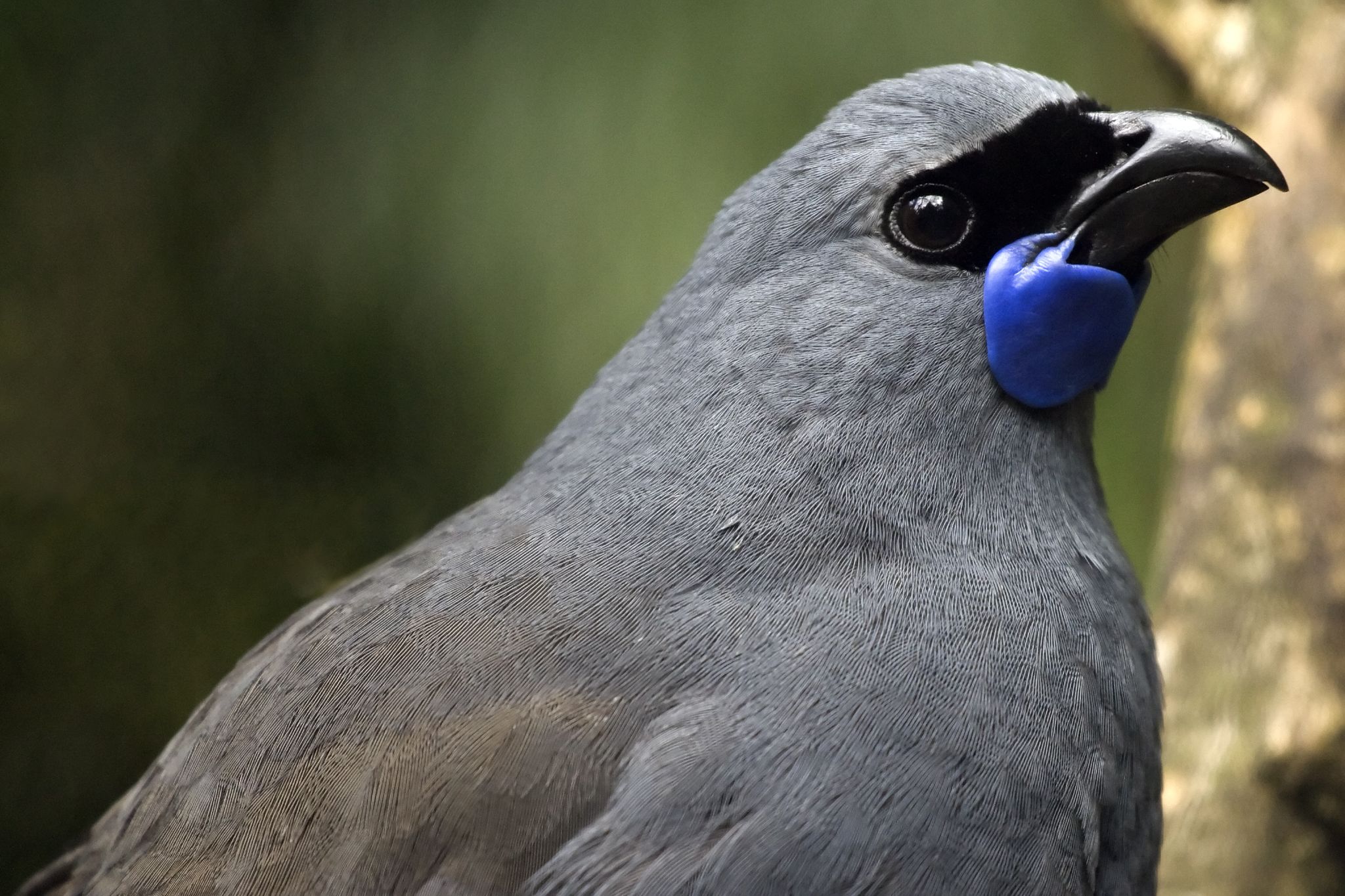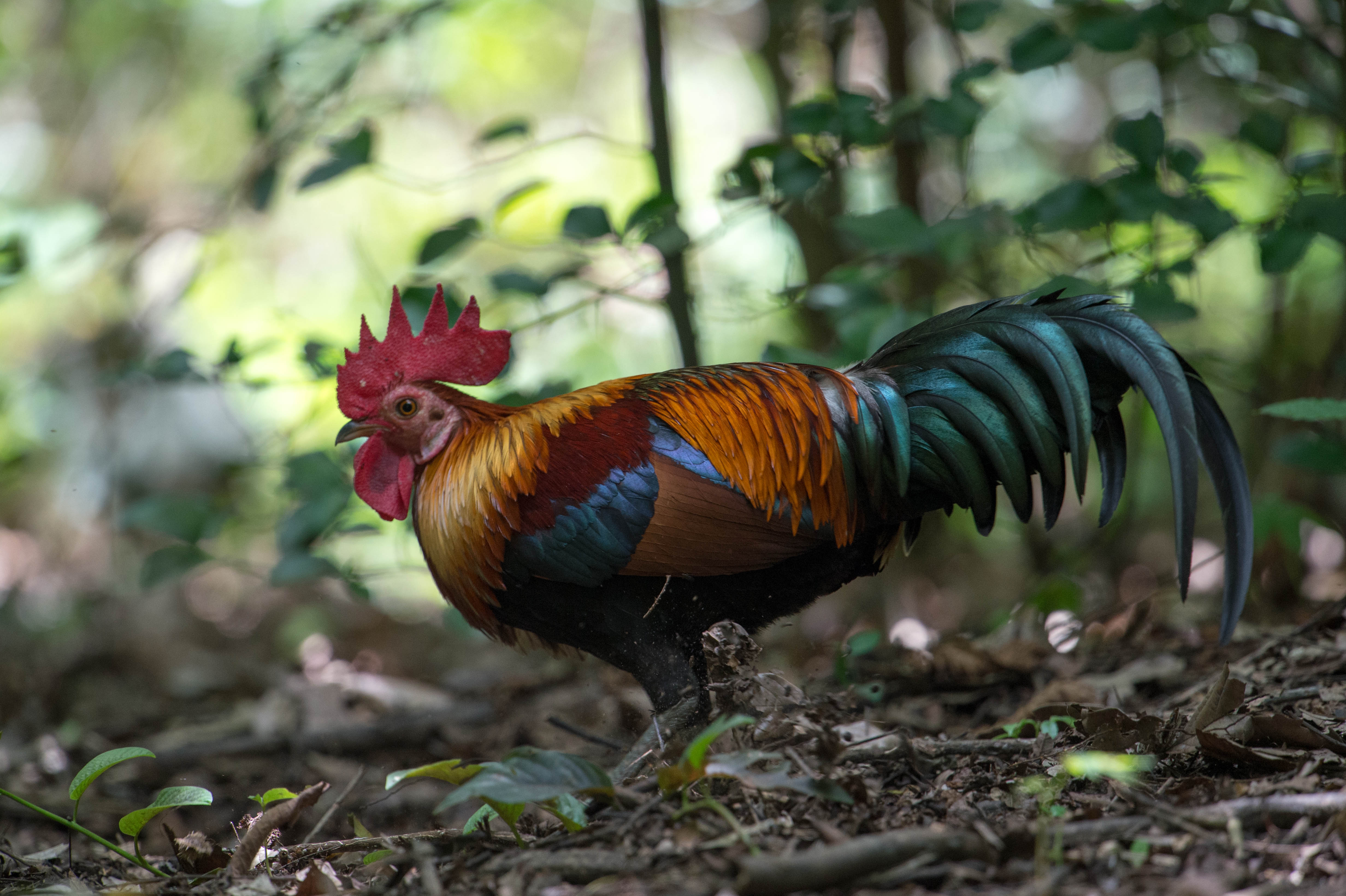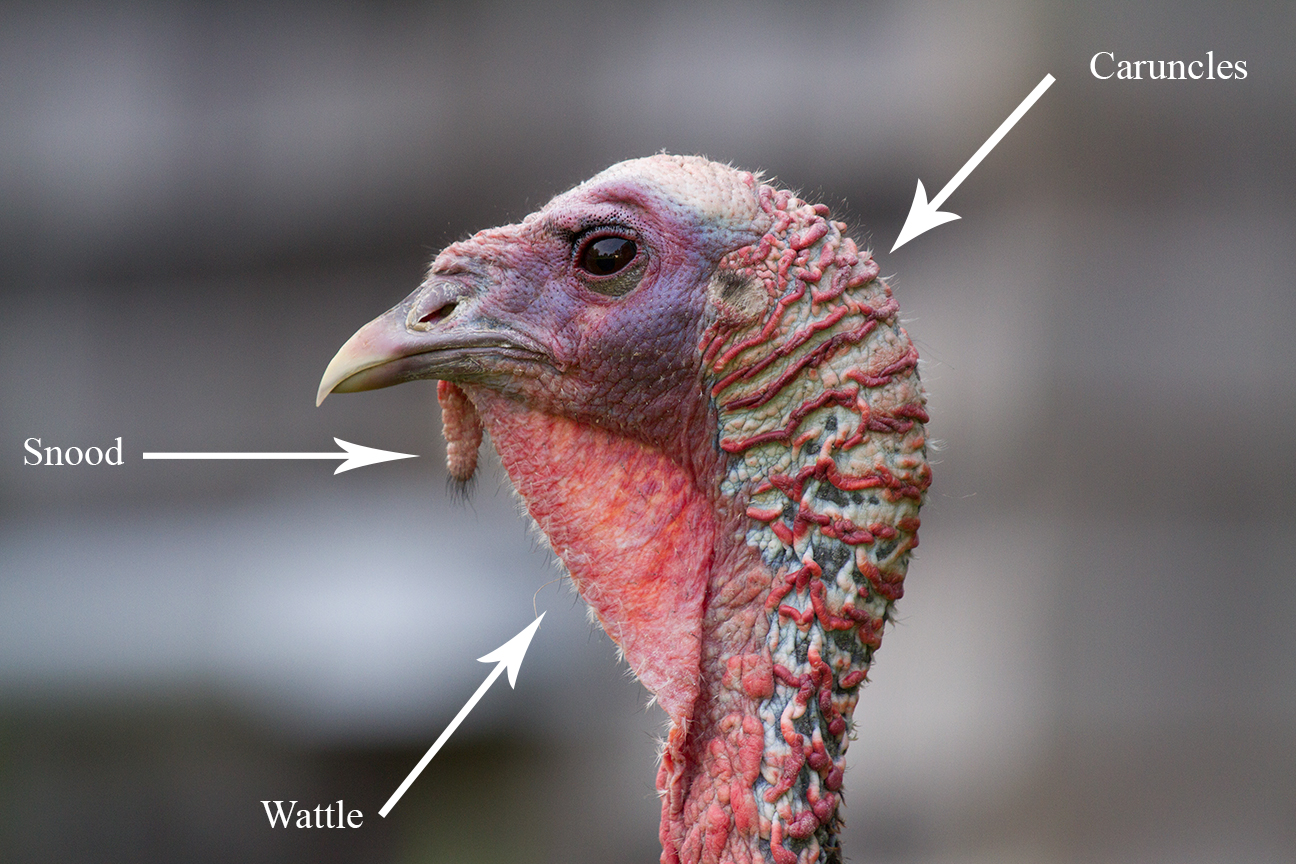|
Wattle (anatomy)
A wattle is a fleshy Caruncle (bird anatomy), caruncle hanging from various parts of the head or neck in several groups of birds and mammals. Caruncles in birds include those found on the face, wattles, dewlaps, Snood (anatomy), snoods, and earlobes. Wattles are generally paired structures but may occur as a single structure when it is sometimes known as a dewlap. Wattles are frequently organs of sexual dimorphism. In some birds, caruncles are erectile tissue and may or may not have a feather covering. Wattles are often such a striking Morphology (biology), morphological characteristic of animals that they feature in their common name. For example, the southern and northern cassowaries are known as the double-wattled and single-wattled cassowary, respectively, and a breed of domestic pig is known as the red wattle hog, Red Wattle. Birds Function In birds, wattles are often an ornament for courting Sexual selection, potential mates. Large wattles are correlated with high testos ... [...More Info...] [...Related Items...] OR: [Wikipedia] [Google] [Baidu] |
Rooster Portrait2
The chicken (''Gallus gallus domesticus'') is a domesticated subspecies of the red junglefowl (''Gallus gallus''), originally native to Southeast Asia. It was first domesticated around 8,000 years ago and is now one of the most common and widespread domesticated animals in the world. Chickens are primarily kept for their meat and eggs, though they are also kept as pets. As of 2023, the global chicken population exceeds 26.5 billion, with more than 50 billion birds produced annually for consumption. Specialized breeds such as broilers and laying hens have been developed for meat and egg production, respectively. A hen bred for laying can produce over 300 eggs per year. Chickens are social animals with complex vocalizations and behaviors, and feature prominently in folklore, religion, and literature across many societies. Their economic importance makes them a central component of global animal husbandry and agriculture. Nomenclature Terms for chickens include: * ''Bid ... [...More Info...] [...Related Items...] OR: [Wikipedia] [Google] [Baidu] |
Huia
The huia ( ; ; ''Heteralocha acutirostris'') is an extinct species of New Zealand wattlebird, endemic to the North Island of New Zealand. The last confirmed sighting of a huia was in 1907, although there was another credible sighting in 1924. It was already a rare bird before the arrival of Europeans, confined to the Ruahine, Tararua, Rimutaka and Kaimanawa mountain ranges in the south-east of the North Island. It was remarkable for its pronounced sexual dimorphism in bill shape; the female's beak was long, thin and arched downward, while the male's was short and stout, like that of a crow. Males were long, while females were larger at . The sexes were otherwise similar, with orange wattles and deep metallic, bluish-black plumage with a greenish iridescence on the upper surface, especially about the head. The tail feathers were unique among New Zealand birds in having a broad white band across the tips. The birds lived in forests at both montane and lowland elevation ... [...More Info...] [...Related Items...] OR: [Wikipedia] [Google] [Baidu] |
Tieke
The saddlebacks or tīeke (Māori) are two species of New Zealand birds of the family Callaeidae. Both are glossy black with a chestnut saddle. Their taxonomic family is also known as that of the (New Zealand) "wattlebirds" and includes the two species of kōkako, and the extinct huia. All members of the family Callaeidae have coloured fleshy wattles on either side of the beak; the saddlebacks' are a vivid red. Taxonomy The genus ''Philesturnus'' was introduced in 1832 by the French zoologist Isidore Geoffroy Saint-Hilaire to accommodate a single species, the South Island saddleback, which is therefore the type species of the genus. The name combines the honeyeater genus ''Philedon'' and the starling genus ''Sturnus''. The saddleback's common name derives from the demarcated brown plumage on its back, which resembles a saddle. The Māori name, , is onomatopoeic and comes from one of the species' calls: "ti-e-ke-ke-ke-ke". There are two species: * North Island saddleback � ... [...More Info...] [...Related Items...] OR: [Wikipedia] [Google] [Baidu] |
Kōkako
Kōkako are two species of forest bird in the genus ''Callaeas'' which are endemic to New Zealand, the endangered North Island kōkako (''Callaeas wilsoni'') and the presumed extinct South Island kōkako (''Callaeas cinereus''). They are both slate-grey with wattles and have black masks. They belong to a family containing five species of New Zealand wattlebirds, the other three being two species of tīeke (saddleback) and the extinct huia. Previously widespread, kōkako populations throughout New Zealand have been decimated by the predations of mammalian invasive species such as possums, stoats, cats and rats, and their range has contracted significantly. In the past, this bird was called the New Zealand crow. It is not closely related to the crow, but looks like one from a distance. Taxonomy The genus ''Callaeas'' was introduced in 1788 by the German naturalist Johann Reinhold Forster to accommodate a single species, the South Island kōkako, which is therefore the type ... [...More Info...] [...Related Items...] OR: [Wikipedia] [Google] [Baidu] |
Callaeidae
Callaeidae (sometimes Callaeatidae) is a family of passerine birds endemic to New Zealand. It contains three genera, with five species in the family. One species, the huia, became extinct early in the 20th century, while the South Island kōkako is critically endangered and may be extinct. Although sometimes known as ''wattled crows'', they are not corvids and are only distantly related to crows - ''New Zealand wattlebirds'' is the informal name for this family used by the scientific community.Higgins, P.J. & J.M. Peter (eds) 2002. Handbook of Australian, New Zealand and Antarctic Birds. Volume 6: Pardalotes to Shrike-thrushes. Oxford University Press, Melbourne. Biology and evolution They are ground-dwelling songbirds, 26–38 cm in length. They inhabit dense forests, where they feed on insects. They have strong legs and featherless wattles behind the bill. Their wings are rounded and unusually weak, giving them very limited powers of flight. They are monogamous and m ... [...More Info...] [...Related Items...] OR: [Wikipedia] [Google] [Baidu] |
Wattlebird
''Anthochaera'' is a genus of birds in the honeyeater family. The species are endemic to Australia and include the little wattlebird, the red wattlebird, the western wattlebird, and the yellow wattlebird. A molecular phylogenetic study has shown that the regent honeyeater also belongs in this genus. Description Of the five species in the genus only the yellow wattlebird (''Anthochaera paradoxa'') and the red wattlebird (''A. carunculata'') have the wattles of their common name. These are bare fleshy appendages, usually wrinkled and often brightly coloured, hanging from the cheeks, neck or throat, and presumably serving for display. A common name for species of the genus is wattlebird, a term also used for unrelated avian species. Taxonomy The genus ''Anthochaera'' was introduced in 1827 by the naturalists Nicholas Aylward Vigors and Thomas Horsfield. The name is derived from the Greek ''anthos'' meaning flower or bloom and ''khairō'' meaning to enjoy. The type species w ... [...More Info...] [...Related Items...] OR: [Wikipedia] [Google] [Baidu] |
Wattled Starling
The wattled starling (''Creatophora cinerea'') is a nomadic resident bird in eastern and southern Africa. It is a species of grassland, open woodland, and cultivation. This is the only African starling that appears to show affinities with the Asian starlings, particularly the genus ''Sturnus''. Its bare face patches and ability to open-bill feed in grassland are unique amongst African starlings. It is the only member of the genus ''Creatophora''. This common species appears to be extending its range into West Africa and has also occurred in Arabia, Madagascar, and Seychelles. Description The wattled starling is 21 cm long, with a short tail and pointed wings. It has mainly grey plumage except for a white rump, and black flight feathers and tail. The breeding male has a white shoulder patch and a distinctive head pattern, with unfeathered yellow skin, and black forehead and throat wattles. The extent to which these seasonal features develop increases with the age of the bir ... [...More Info...] [...Related Items...] OR: [Wikipedia] [Google] [Baidu] |
Lapwing
Lapwings (subfamily Vanellinae) are any of various ground-nesting birds (Family (biology), family Charadriidae) akin to plovers and dotterels. They range from in length, and are noted for their slow, irregular wingbeats in flight and a shrill, wailing cry. The traditional terms "plover", "lapwing", and "dotterel" do not correspond exactly to current taxonomic models; thus, several of the Vanellinae are often called plovers, and Red-kneed dotterel, one a dotterel, while a few of the "true" plovers (subfamily Charadriinae) are known colloquially as lapwings. In general, a lapwing can be thought of as a larger plover. In Europe's Anglophone countries, ''lapwing'' refers specifically to the northern lapwing, the only member of this group to occur in most of the continent and thus the first bird to go by the English name ''lapwing'' (also known as ''peewit'' or ''pyewipe''). In the fanciful taxonomy promoted by medieval courtesy books, a group of lapwings was called a "deceit". Sy ... [...More Info...] [...Related Items...] OR: [Wikipedia] [Google] [Baidu] |
Vulture
A vulture is a bird of prey that scavenges on carrion. There are 23 extant species of vulture (including condors). Old World vultures include 16 living species native to Europe, Africa, and Asia; New World vultures are restricted to North and South America and consist of seven identified species, all belonging to the Cathartidae family. A particular characteristic of many vultures is a bald, unfeathered head. This bare skin is thought to keep the head clean when feeding, and also plays an important role in thermoregulation. Vultures have been observed to hunch their bodies and tuck in their heads in the cold, and open their wings and stretch their necks in the heat. They also urinate on themselves as a means of cooling their bodies. A group of vultures in flight is called a "kettle", while the term "committee" refers to a group of vultures resting on the ground or in trees. A group of vultures that are feeding is termed a "wake". Taxonomy Although New World vulture ... [...More Info...] [...Related Items...] OR: [Wikipedia] [Google] [Baidu] |
Chicken
The chicken (''Gallus gallus domesticus'') is a domesticated subspecies of the red junglefowl (''Gallus gallus''), originally native to Southeast Asia. It was first domesticated around 8,000 years ago and is now one of the most common and widespread domesticated animals in the world. Chickens are primarily kept for chicken as food, their meat and egg as food, eggs, though they are also kept as pets. As of 2023, the global chicken population exceeds 26.5 billion, with more than 50 billion birds produced annually for consumption. Specialized breeds such as broilers and laying hens have been developed for meat and egg production, respectively. A hen bred for laying can produce over 300 eggs per year. Chickens are social animals with complex vocalizations and behaviors, and cultural references to chickens, feature prominently in folklore, religion, and literature across many societies. Their economic importance makes them a central component of global animal husbandry and agricu ... [...More Info...] [...Related Items...] OR: [Wikipedia] [Google] [Baidu] |
Wild Turkey
The wild turkey (''Meleagris gallopavo'') is an upland game bird native to North America, one of two extant species of Turkey (bird), turkey and the heaviest member of the order Galliformes. It is the ancestor to the domestic turkey (''M. g. domesticus''), which was originally derived from a southern Mexican subspecies of wild turkey (not the related ocellated turkey). Taxonomy The wild turkey was Species description, formally described in 1758 by the Swedish naturalist Carl Linnaeus in the 10th edition of Systema Naturae, tenth edition of his ''Systema Naturae'' under its current binomial nomenclature, binomial name ''Meleagris gallopavo''. The type locality (biology), type locality is Mexico. The genus name ''Meleagris'' is from Ancient Greek μελεαγρις/''meleagris'' meaning "guineafowl". The specific epithet ''gallopavo'' is a late Medieval Latin word for a wild turkey: it combines Latin ''gallus'' meaning "fowl" and ''pavo'' meaning "peacock". The word was used in 155 ... [...More Info...] [...Related Items...] OR: [Wikipedia] [Google] [Baidu] |








